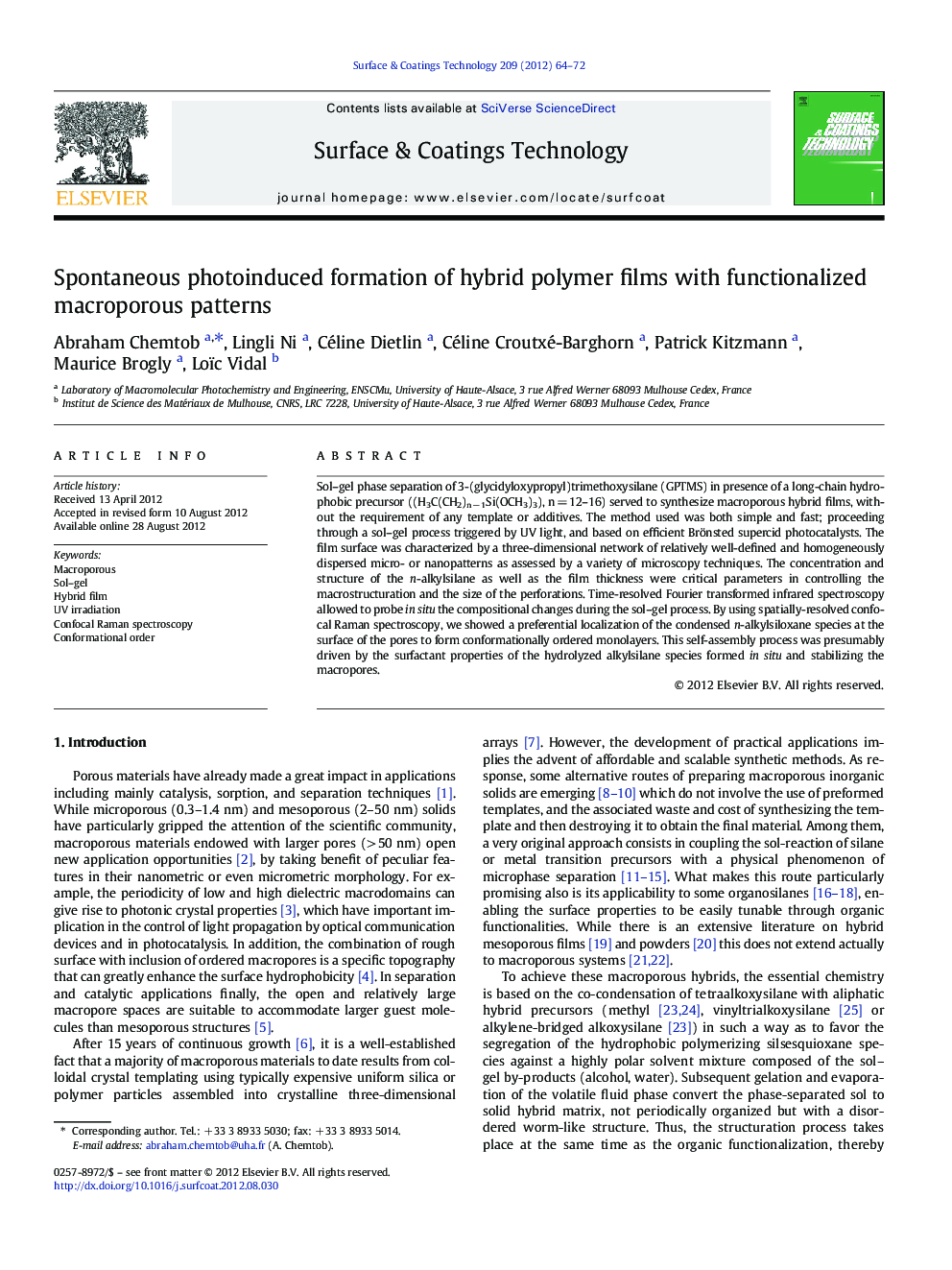| Article ID | Journal | Published Year | Pages | File Type |
|---|---|---|---|---|
| 1658338 | Surface and Coatings Technology | 2012 | 9 Pages |
Sol–gel phase separation of 3-(glycidyloxypropyl)trimethoxysilane (GPTMS) in presence of a long-chain hydrophobic precursor ((H3C(CH2)n − 1Si(OCH3)3), n = 12–16) served to synthesize macroporous hybrid films, without the requirement of any template or additives. The method used was both simple and fast; proceeding through a sol–gel process triggered by UV light, and based on efficient Brönsted supercid photocatalysts. The film surface was characterized by a three-dimensional network of relatively well-defined and homogeneously dispersed micro- or nanopatterns as assessed by a variety of microscopy techniques. The concentration and structure of the n-alkylsilane as well as the film thickness were critical parameters in controlling the macrostructuration and the size of the perforations. Time-resolved Fourier transformed infrared spectroscopy allowed to probe in situ the compositional changes during the sol–gel process. By using spatially-resolved confocal Raman spectroscopy, we showed a preferential localization of the condensed n-alkylsiloxane species at the surface of the pores to form conformationally ordered monolayers. This self-assembly process was presumably driven by the surfactant properties of the hydrolyzed alkylsilane species formed in situ and stabilizing the macropores.
► A template-free photochemical approach towards macroporous hybrid films is proposed. ► Access to hydrid macrostructures is performed in one-step without post-functionalization. ► An array of well-distributed macropores is formed. ► Self-assembled n-alkylsiloxane species are localized at the pore surface.
